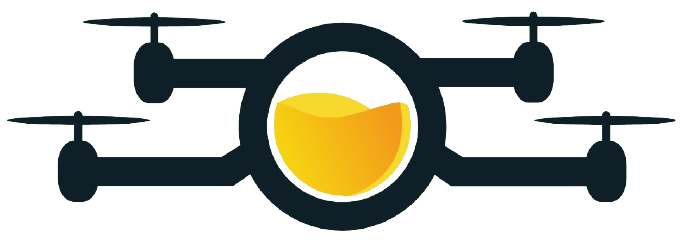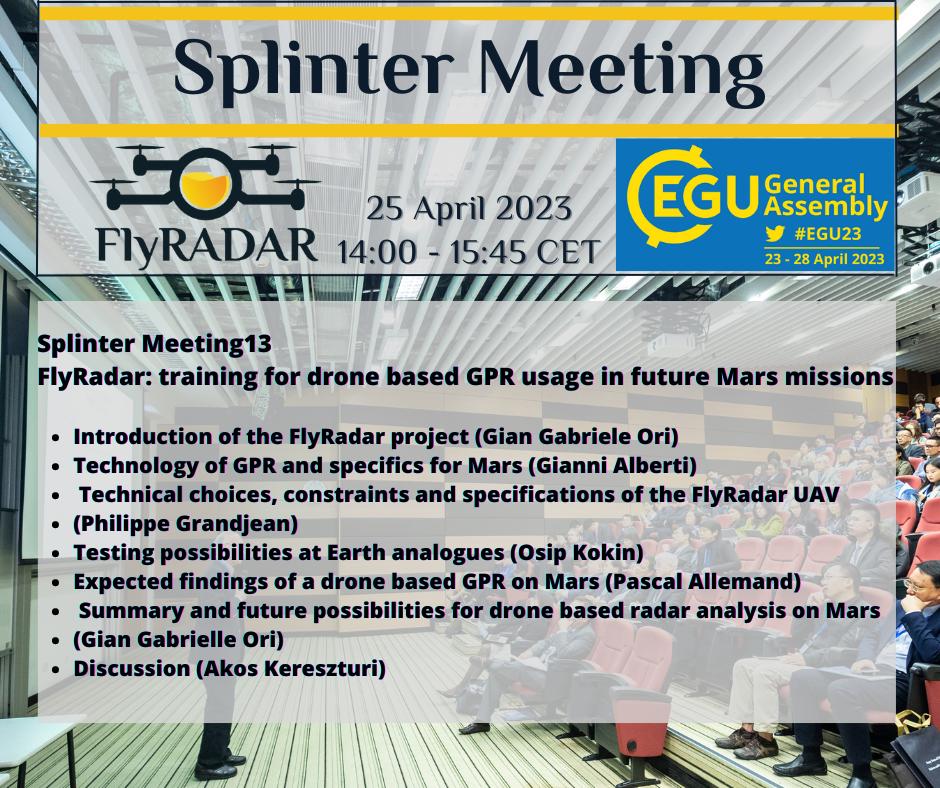

The project deals with the production of a dual-mode, low-frequency, radar installed on board of a light-weight UAV. The radar will operate into two modes: as Synthetic Aperture Radar (SAR) and as ground penetrating radar. Both instruments provide extremely interesting images that are extensively used in Earth and planetary observations.
However, these airborne systems are bulky and can be operated only from manned aircraft both planes and helicopters. On the other hand, the few drones that can sustain such a equipment are large and heavy. In both cases, the operations are expensive and has a complicate logistic. The quantum leap of FlyRadar consists of installing this radar system onboard small and light electric octocopters, providing low cost utilisation and easy operations. This affordable system will enlarge the user communities generating the possibility for an extensive use of FlyRadar taking advantage of the potentiality of this long-lasting innovation.

Bouichet Plateau, July 2025

Lyon, June 2025

Lyon, May 2025

Sao Paolo, Brazil 2024

Online, May 2025

Online, September 2023

Budapest, October 2024

Berlin, September 2024

Online, January 2023

Pescara, June 2022

Pescara, October 2022

Vienna, April 2023

Online, November 2021

Online, July 2021
| Cookie | Durata | Descrizione |
|---|---|---|
| cookielawinfo-checbox-analytics | 11 months | This cookie is set by GDPR Cookie Consent plugin. The cookie is used to store the user consent for the cookies in the category "Analytics". |
| cookielawinfo-checbox-functional | 11 months | The cookie is set by GDPR cookie consent to record the user consent for the cookies in the category "Functional". |
| cookielawinfo-checbox-others | 11 months | This cookie is set by GDPR Cookie Consent plugin. The cookie is used to store the user consent for the cookies in the category "Other. |
| cookielawinfo-checkbox-necessary | 11 months | This cookie is set by GDPR Cookie Consent plugin. The cookies is used to store the user consent for the cookies in the category "Necessary". |
| cookielawinfo-checkbox-performance | 11 months | This cookie is set by GDPR Cookie Consent plugin. The cookie is used to store the user consent for the cookies in the category "Performance". |
| viewed_cookie_policy | 11 months | The cookie is set by the GDPR Cookie Consent plugin and is used to store whether or not user has consented to the use of cookies. It does not store any personal data. |